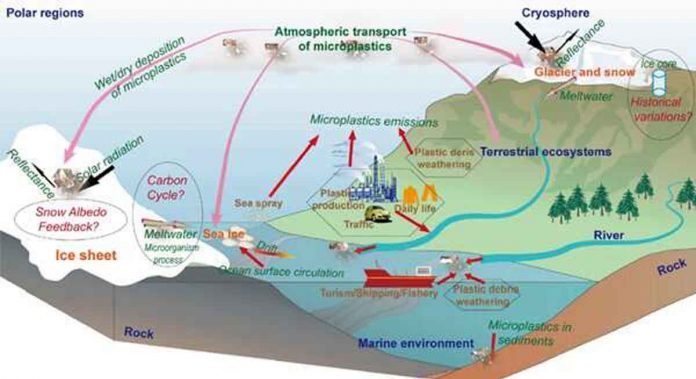Microplastics usually refer to plastic fibers, films, fragments and microbes with sizes less than five millimeters. They are widely distributed in water, soil, sediment, the atmosphere and even snow and ice. It impacts Earth’s climate and environment.
A research team from the Northwest Institute of Eco-Environmental and Resources of the Chinese Academy of Sciences conducted a series of studies on the features and potential impacts of microplastics in the typical cryospheric regions.
Typical cryospheric regions like the Arctic, Antarctic and the Tibetan Plateau. These are usually far away from intensive anthropogenic activities.They are considered as the ideal laboratory to investigate the source, transmission and impact of pollutants.
The researchers found that microplastics were widely distributed in snow, ice, river water and surface soil in these remote cryospheric regions including Arctic, Antarctic, Tibetan Plateau, Alps, and Andes. Microplastic concentrations in snow and ice differed one to four orders of magnitudes mainly due to the different sampling and measurement methods.
Systematic sampling and measurement methods would help to establish the microplastics dataset in snow, ice, soil and another environment matrix, and to promote the comprehensive investigations of microplastic pollution globally.
Abundant microplastics were also found in glaciers in the Tibetan Plateau. It indicates that microplastics could be transported over long distances from the surrounded regions with heavy anthropogenic emissions of pollutants.
These studies may enhance our understanding of the features and transport of microplastics in the cryospheric regions and further help to estimate the potential impacts of microplastics on the environment.

